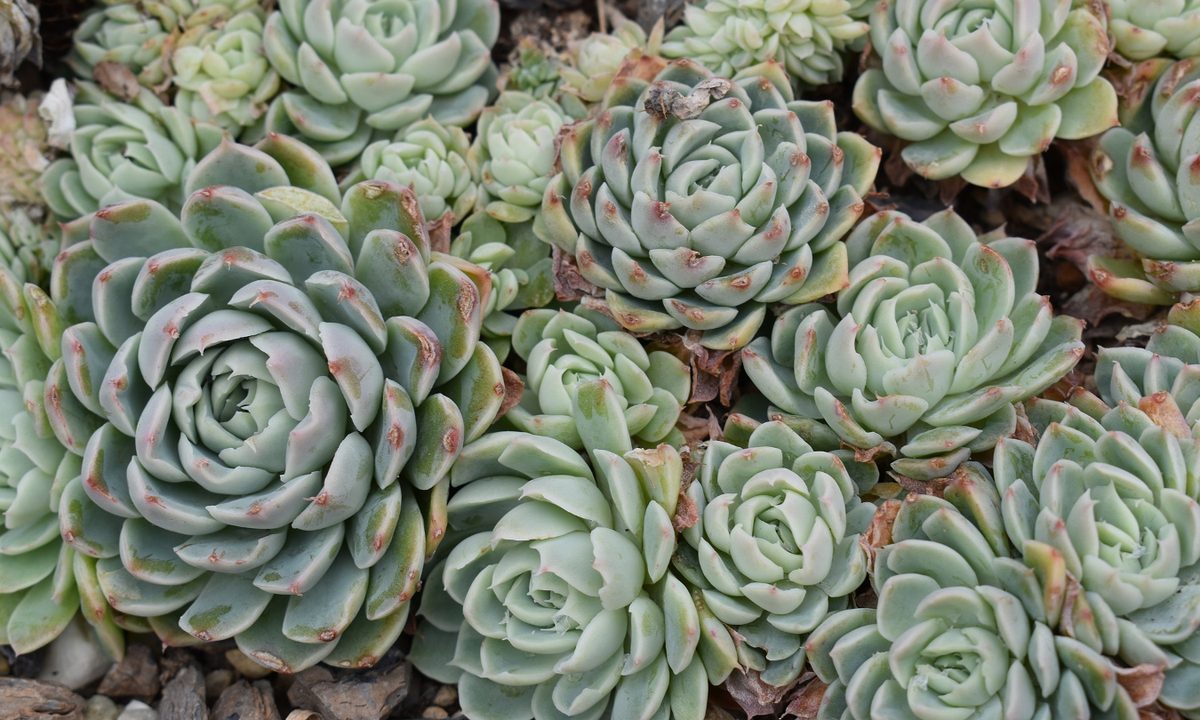If you’re a fan of beautiful succulent gardens, you may already be familiar with echeveria. These popular succulents are lovely and easy to grow, whether you’ve grown dozens of succulents before or this is your first one. If you’re planning on adding echeveria to your existing succulent garden, want to get one for your home or office, or have been gifted one that you aren’t sure what to do with, this is the guide for you. We’ll explain everything you need to know to keep your echeveria happy and healthy.
Planting echeveria
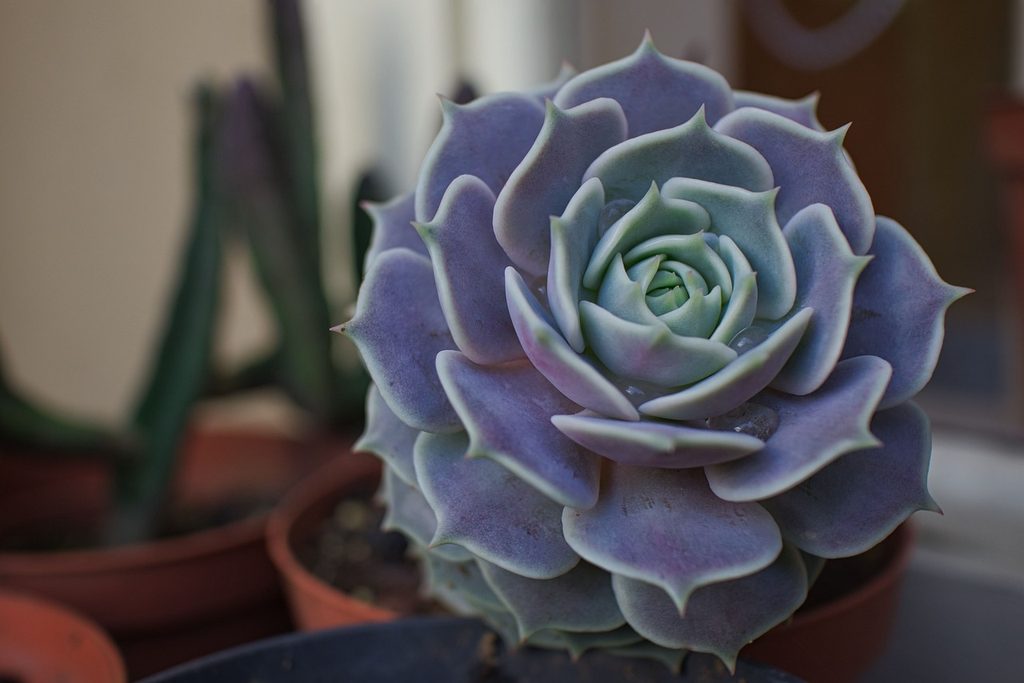
Like many other succulents, echeveria does best in a cactus soil mix or other well-draining soil. The container should also have drainage holes, so that excess water can drain. If you’ve recently gotten your echeveria from a festival or fair, it’s not uncommon for them to be sold in mugs or teacups, which is very cute but does not provide proper drainage. Be sure to repot them as soon as possible.
Place your echeveria in a sunny window, where it will get at least six to eight hours of sunlight. Echeveria can tolerate some shade, but it may become leggy if it doesn’t get enough sun. This means the stem will become long and bend toward the nearest light source. It’s unattractive and not as healthy for your plant, so supplement natural sunlight with a grow light if you don’t have a sunny window for your echeveria.
Echeveria care
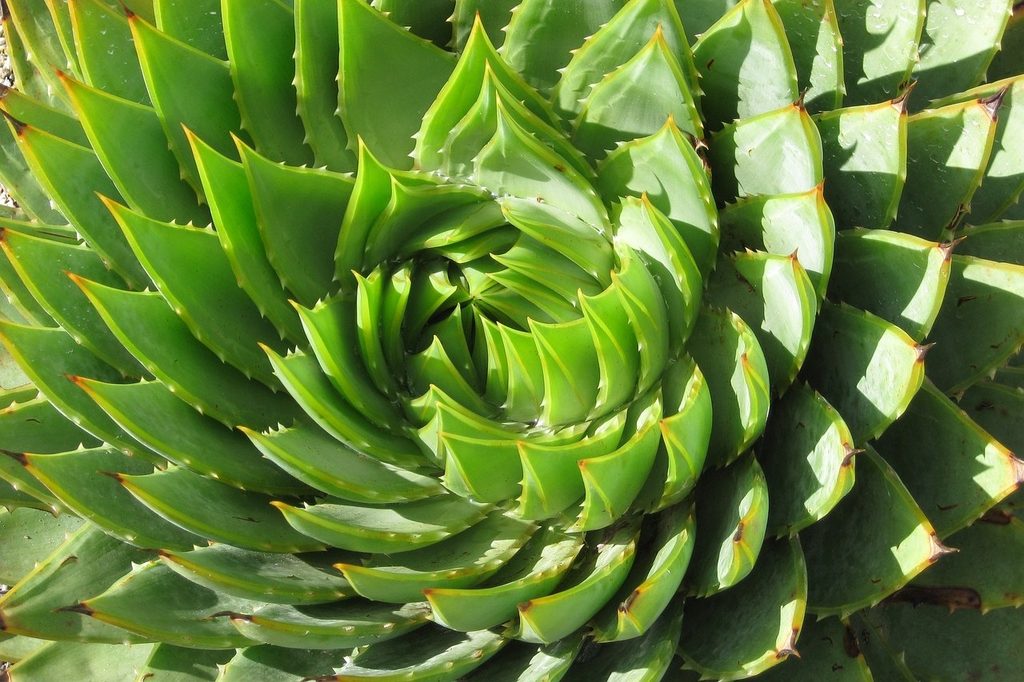
Water your echeveria lightly every week to week and a half during spring and summer, but decrease watering during fall and winter. Be sure the water is draining properly, and empty any tray or saucer you have underneath the pot to prevent it from reabsorbing the excess water. If your echeveria plants outside, you may need to water them more frequently, as the temperature difference can speed up evaporation.
Echeveria succulents are not heavy feeders and need minimal fertilizing. A light dose of slow-release fertilizer or a diluted application of liquid houseplant fertilizer every few months works just fine for them. Avoid fertilizing during fall and winter, when your echeveria plants will be slowing its growth.
Keep your echeveria plant warm throughout the year. Avoid placing it under air vents or near drafty windows, as both the temperature and the dryness of the air can cause problems. Echeveria prefer a moderate humidity of around 40% to 50%, and dry air can make it more vulnerable to pests.
Pests and problems
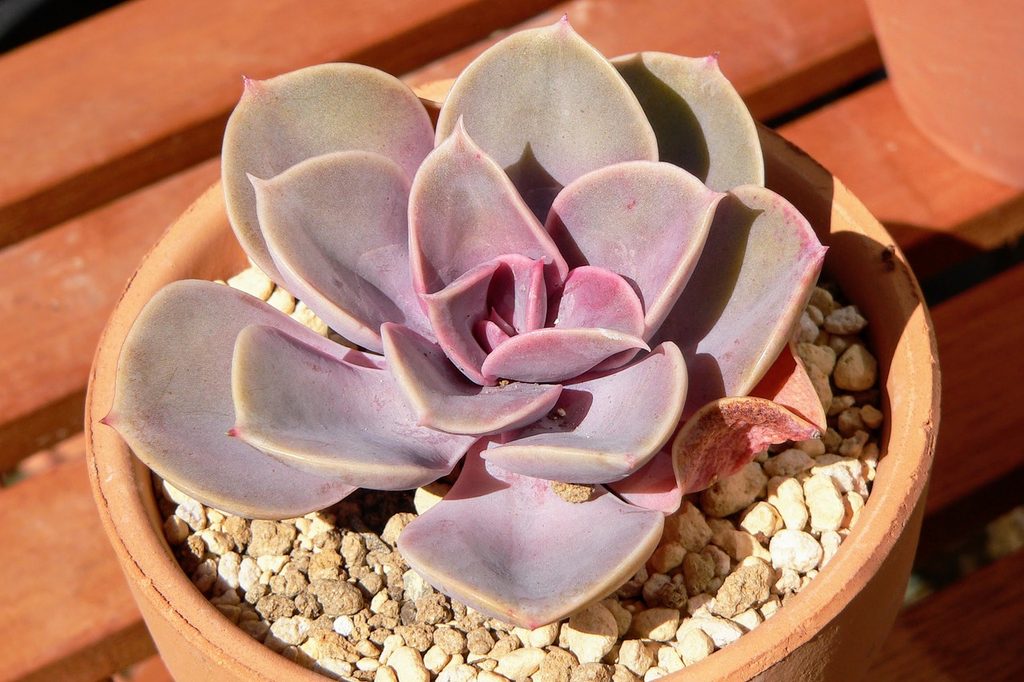
Like most succulents, one of the most common problems with echeveria is overwatering. Soft, yellowing leaves are the primary sign of overwatering. If left untreated, this can progress to rot, fungal infections, and even a fungus gnat infestation. Luckily, this is easy to avoid. Don’t water your echeveria if the soil is still damp, and be sure the soil and container are draining properly. Letting the soil dry out or repotting the echeveria in fresh, dry soil can help it recover from being overwatered.
Underwatering is a less common issue, and it’s easier to fix. The primary signs of underwatered echeveria are dry leaves that are turning brown or wrinkling at the edges. Simply begin watering your echeveria again and it should recover.
Common household pests such as aphids, spider mites, scale, and mealybugs can sometimes bother echeveria. These pests typically don’t do major damage, but they can be a nuisance. To keep them at bay, you can dust your echeveria lightly with a dry cloth, mist it occasionally, and use an insecticidal soap or neem oil for more severe infestations.
Is echeveria safe for pets?
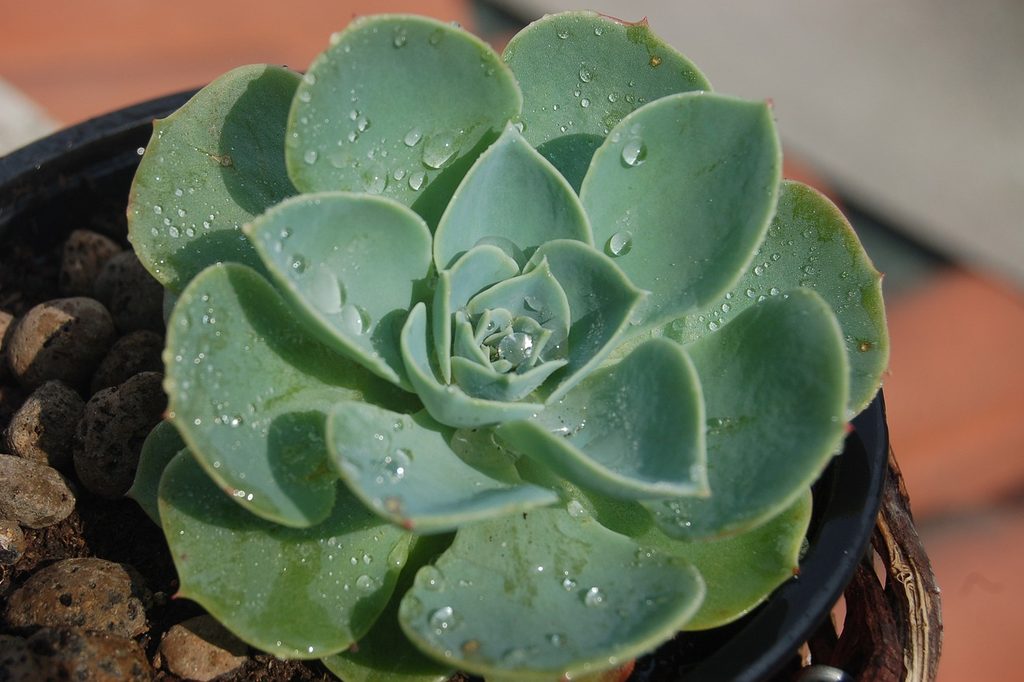
Yes, echeveria is safe for pets! Echeveria is nontoxic for dogs, cats, and people, so you don’t need to worry about any curious kids or critters that try to chew on an echeveria leaf. While they may not find the taste or texture pleasant, it won’t hurt them. However, your echeveria plant won’t be thrilled about it. You may want to consider placing your echeveria out of reach for its own safety.
If a pet or person does snack on your echeveria, give them some water to rinse their mouth out, clean up any lingering plant bits, and remove any damaged leaves from your echeveria. Some varieties have small spines on their leaves, so take extra care to keep them out of reach. They may not be toxic, but they can still be uncomfortable!
Echeveria plants make beautiful additions to homes, offices, dorm rooms, and even existing succulent gardens. They’re easy to grow and even propagate, and they’re lovely to look at. Now that you know all about these simple and delightful succulents, there’s nothing stopping you from bringing home as many of them as you want! They’re even pet and child safe, so you can feel free to grow them without worry or stress.
